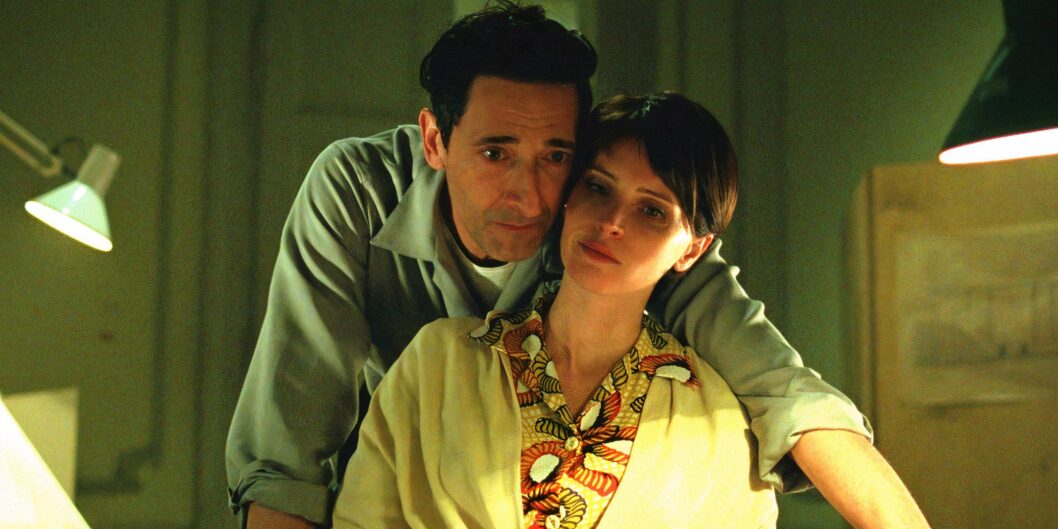Brady Corbet’s The Brutalist Takes Audiences on an Unforgettable Journey
Brady Corbet’s period drama, The Brutalist, has captured critical acclaim and audience attention since its release on December 20, 2024. Garnering an impressive 97% rating on Rotten Tomatoes, the film has been praised for its cinematography, score, and performances, particularly Adrien Brody’s portrayal of László Tóth, which has earned him an Oscar nomination. The film itself is a contender for the prestigious "Best Picture" award.
Film Length and Structure
One of the most notable aspects of The Brutalist is its length—at over three and a half hours, it stands as the longest movie of 2024. This extensive runtime is divided into two acts titled "Part 1: The Enigma of Arrival" and "Part 2: The Hard Core of Beauty", each approximately 100 minutes long, with a 15-minute intermission between them. Audiences are advised to expect a total experience of up to four hours, including previews. Despite the potential inconvenience of such a lengthy session, many critics argue that the film’s pacing and building tension justify its runtime.
The intermission is strategically placed, allowing viewers a moment to reflect. It coincides with a pivotal scene where Erzsébet, László’s wife, discovers vital documentation that could reunite their family. During this break, a photograph of their wedding plays on screen, prompting audiences to contemplate the The Brutalist’s exploration of happiness and family connections.
Narrative Arc: A Tale of Hope and Disillusionment
The film is structured in a unique way that enhances its storytelling. The first act centers on László’s initial years in America, showcasing his struggles with family ties, friendship with Gordon (played by Isaach De Bankolé), and the onset of his relationship with Harrison Van Buren (played by Guy Pearce). Although the act is fraught with tension regarding his wife Erzsébet and niece Zsófia (portrayed by Raffey Cassidy) still being trapped in Hungary, it ultimately exhibits a sense of optimism and hope.
However, the film takes a darker turn in the second act. "Part 2" delves into László’s unraveling American dream, presenting some of the film’s most intense and somber moments. By separating these two acts, The Brutalist effectively underscores how quickly aspirations can collapse, reflecting a universal theme of disillusionment.
Moreover, the film concludes with an epilogue called "Epilogue: The First Architecture Biennale," which reframes the preceding narrative. This additional segment ensures viewers leave with a more comprehensive understanding of the themes and character arcs.
Critical Reception and Future Prospects
The Brutalist has not only achieved critical success but has also set a high bar for future cinematic endeavors in the period drama genre. Adrien Brody’s Oscar nomination is a testament to the remarkable performances throughout the film, indicating its potential to resonate during award season. Other notable cast members include Felicity Jones and Guy Pearce, whose contributions have been highlighted in reviews.
As audiences prepare to dive into this cinematic experience, the long runtime may seem daunting. However, the film’s intermission, combined with its divided acts, has been likened to the experience of attending a theatrical performance, offering both a challenging and rewarding journey.
Conclusion: Cultural Impact and Significance
In summary, The Brutalist stands out not only for its ambitious runtime and compelling performances but also for its rich thematic layers that invite viewers to ponder broader societal issues. As audiences and critics alike respond to its multifaceted narrative, the film could resonate significantly within the cultural landscape of cinema. Its exploration of intertwined destinies and the volatility of the American dream speaks to contemporary audiences, making it a film worth watching—whether in theaters or later via streaming platforms. The generational discussion surrounding The Brutalist is likely to evolve as it continues to screen, solidifying its place in both film history and today’s cinematic discourse.









